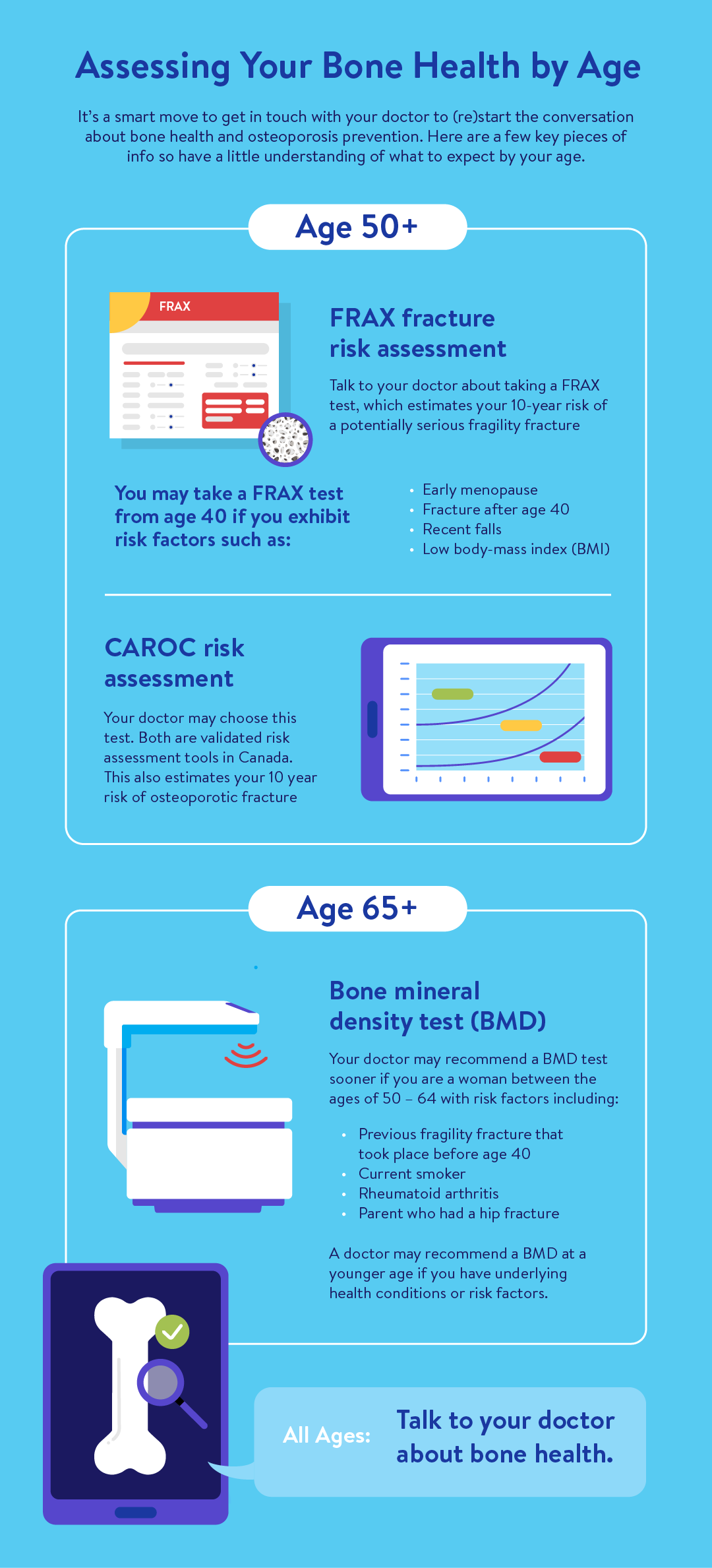Who doesn’t want to get back to regular life? The COVID-19 pandemic disrupted and interrupted a lot of things. Now we’re looking forward to picking up where we left off — travelling, taking part in recreational activities and enjoying family get-togethers, to name a few.
Going back to the doctor’s may not be high on your list of post-pandemic plans, but it should be. It’s important to keep up a conversation about bone health and osteoporosis prevention because healthy bones are an important part of a healthy, enjoyable life.
Did you miss out on doctor’s appointments?
For many Canadians, visits to the doctor were interrupted, cancelled or postponed during the pandemic. There’s evidence that many of us didn’t see our doctors as often, even accounting for virtual visits.
That’s concerning for a number of reasons. Among them is the possibility that many Canadians missed out on timely conversations with their doctors and other healthcare providers about bone health and osteoporosis prevention.
Depending on one’s age and health status, these conversations may have included discussions about how to prevent osteoporosis, or whether it was time to assess one’s risk of a fragility fracture. One recent academic study, for example, indicated a major drop during the first wave of the pandemic in the number of times that people had accessed an online tool to access the FRAX test (that’s a tool for assessing a patient’s risk of fragility fractures — keep reading to learn more.) Canadians accessed the test 45 per cent fewer times in April 2020 than they did in February, before the pandemic hit,
Assessing your risk of a fragility fracture
Osteoporosis Canada guidelines focus on identifying people who are at risk of fragility fractures because they can be catastrophically life-changing (or even fatal).
And because they can reduce your mobility and independence, a fragility fracture could really put a crimp in all of those post-pandemic plans — whether you’re thinking about going on trips, getting more active again, or just picking up the little ones who are near and dear to you.
For all of these reasons, it’s a smart move to get in touch with your doctor to (re)start the conversation about bone health and osteoporosis prevention. The infographic below and the text that follows share a few key pieces of info so have a little understanding of what to expect before you go.

Osteoporosis risk assessment: FRAX, CAROC and BMD
Your doctor will guide you through the process of assessing your risk of a fragility fracture, likely using one or more of the following assessment tools.
Bone mineral density (BMD):
A bone density scan uses X-ray imaging to measure the strength of your bones. Also known as a dual energy X-ray absorptiometry (DXA) scan, a bone density scan usually takes between five and 20 minutes. Once you have BMD results, your doctor can include them to make the calculations in a CAROC or FRAX assessment.
CAROC
CAROC is a simple questionnaire-based assessment tool that uses age, sex, hip BMD, fragility fracture history and steroids use history to identify those at risk of fracture over a 10-year period. Although CAROC is less comprehensive than FRAX, for the majority of people, the results tend to be similar regardless of which of these tools is used. CAROC is less complete but it captures the major risk factors for fracture and is easy to use.
FRAX
The FRAX calculator is similar to CAROC; it also assesses one’s 10-year risk of a fragility fracture. In contrast to CAROC, it requires access to FRAX online calculator. Although BMD results can factor into a FRAX assessment, you don’t need a BMD result in order to complete a FRAX test.
You won’t know what assessment tools and activities your doctor may recommend for your own personal bone health and osteoporosis prevention until you book an appointment. So do it today — and get back to bone health!


